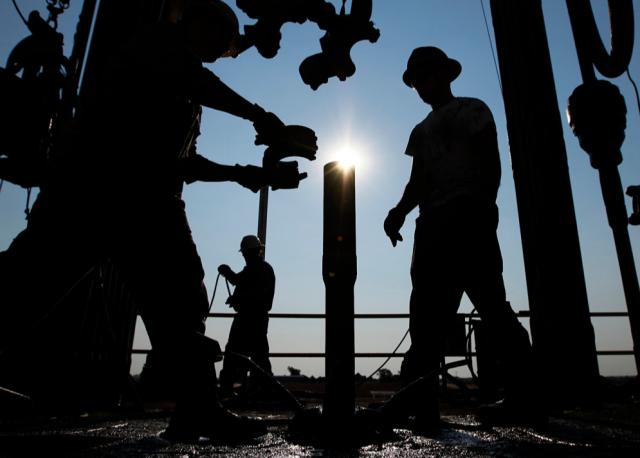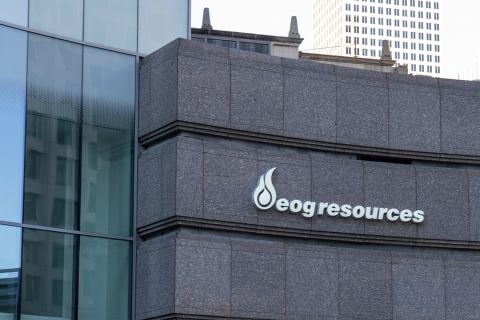
An examination of which operators still have active field programs in the Midcontinent may serve as the blueprint in the new era of mandatory sustainable free cash flow and deleveraged balance sheets. (Source: Hart Energy)
[Editor's note: This story originally appeared in the January 2020 edition of E&P. Subscribe to the magazine here.]
One clue about industry direction in the post-volume production growth phase in tight formation oil and gas development surfaced during Hart Energy’s recent DUG Midcontinent Conference in Oklahoma City.
This region hosted the most promising new tight formation plays in the U.S. outside the Permian Basin just two years ago. Currently, the Midcontinent has become the most economically challenged of all shale plays. The Midcontinent rig count as of November 2019 had dropped by two-thirds. Specifically, Devon Energy Corp. had gone from 11 rigs active to zero in the fourth quarter. Cimarex Energy Co. dropped from four active rigs to zero. Financially challenged Alta Mesa Resources Inc. dropped from eight active rigs to one, as did Roan Resources Co. Continental Resources Inc. cut rig count from 22 to 12, while XTO Energy Inc. and Encana Corp. eliminated half their active rigs.
Simultaneously, active fracture stimulation fleets were half the number in November than they were in January 2019.
Some reduction in rig count, noticeably by Continental, reflected increased performance efficiencies in full field development.
Despite previous projections among sell-side energy analysts that the Mississippian play in the Anadarko Basin hosted economic breakevens below $50, rig count direction and fracture stimulation activity suggest otherwise. Indeed, one projection among presenters was that the industry needed $65 oil for sustainable free cash flow.
A roundup of the usual suspects in regionwide underperformance included unexpected geological heterogeneity as the plays shrink into isolated sweet spots, overcapitalization in well intensity and highly aggressive well spacing which, according to presenters at DUG Midcontinent, saw a rising percentage of infill wells producing from 25% to 35% below adjacent primary wells.
But rig count has not gone to zero for the Midcontinent. An examination of responses from presenters who still had active field programs outlined coping strategies that may serve as the blueprint in the new era of mandatory sustainable free cash flow and deleveraged balance sheets. Solutions were outlined typically by smaller independents, both public and privately held. The recurring theme was that less is more when it comes to well design. It means, in part, that lateral lengths have maxed out. Stage spacing is actually widening after several years of decreasing, and proppant loading per lateral foot, a common metric in the production volume growth phase of tight formation development, was dropping for the first time in half a decade. It also means fewer wells per drilling spacing unit.

To frame the change, think about the arc of tight formation development over the last half decade. The goal was production volume growth at any cost, which translated into greater completion intensity to boost initial potential (IP). Well designs incorporated greater lateral length, a move to slickwater completions and the injection of more proppant. These designs generated rising IPs and rising aggregate flush oil production. Yet those same well designs by 2018 were producing a decline in new well productivity as the industry moved from primary wells to a greater percentage of infill wells.
What appears to be evolving, and what may be extensible to tight formation basins in a tough commodity price strip, is that independents now view properties as an asset class rather than a collection of individual high performance prospects. Rather than pursuing headline-generating individual well results, E&P companies are looking at a given area and investigating programs to generate net economic benefit from the acreage as a whole.
Think of it this way: E&P companies are going to quit drilling uneconomic wells and focus on positive asset class returns. In the new era where less is more, it may be possible to do so even in lower tier acreage.
Recommended Reading
EOG Resources Wildcatting Veteran Billy Helms to Retire
2024-04-02 - Joining an EOG Resources predecessor in 1981, Helms is among the pre-1986-oil-bust generation who later found success in shale.
Buffett: ‘No Interest’ in Occidental Takeover, Praises 'Hallelujah!' Shale
2024-02-27 - Berkshire Hathaway’s Warren Buffett added that the U.S. electric power situation is “ominous.”
Magnolia Oil & Gas Hikes Quarterly Cash Dividend by 13%
2024-02-05 - Magnolia’s dividend will rise 13% to $0.13 per share, the company said.
BP’s Kate Thomson Promoted to CFO, Joins Board
2024-02-05 - Before becoming BP’s interim CFO in September 2023, Kate Thomson served as senior vice president of finance for production and operations.
NOV's AI, Edge Offerings Find Traction—Despite Crowded Field
2024-02-02 - NOV’s CEO Clay Williams is bullish on the company’s digital future, highlighting value-driven adoption of tech by customers.





